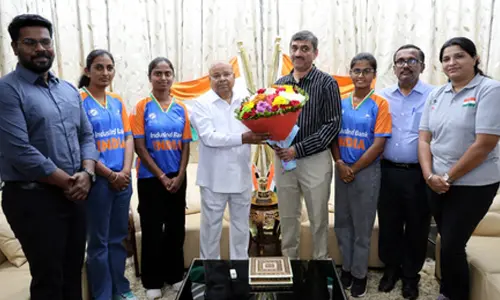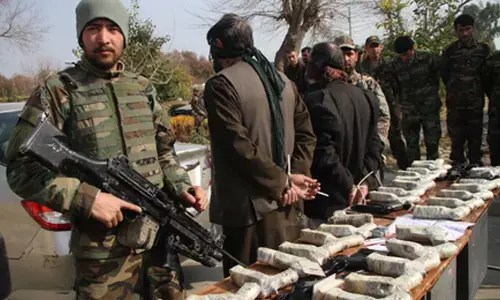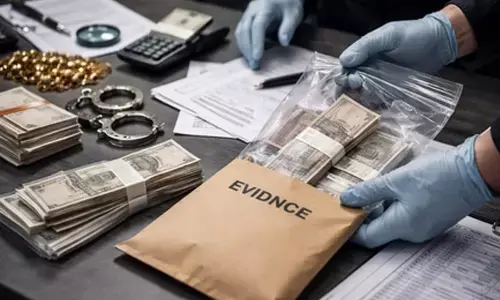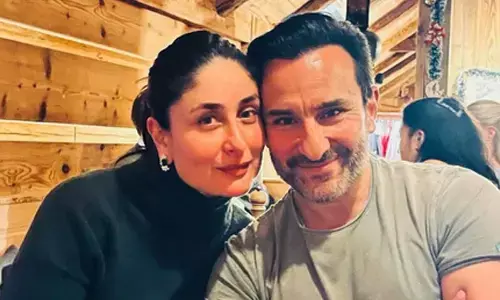Origin of painting in India - Part I
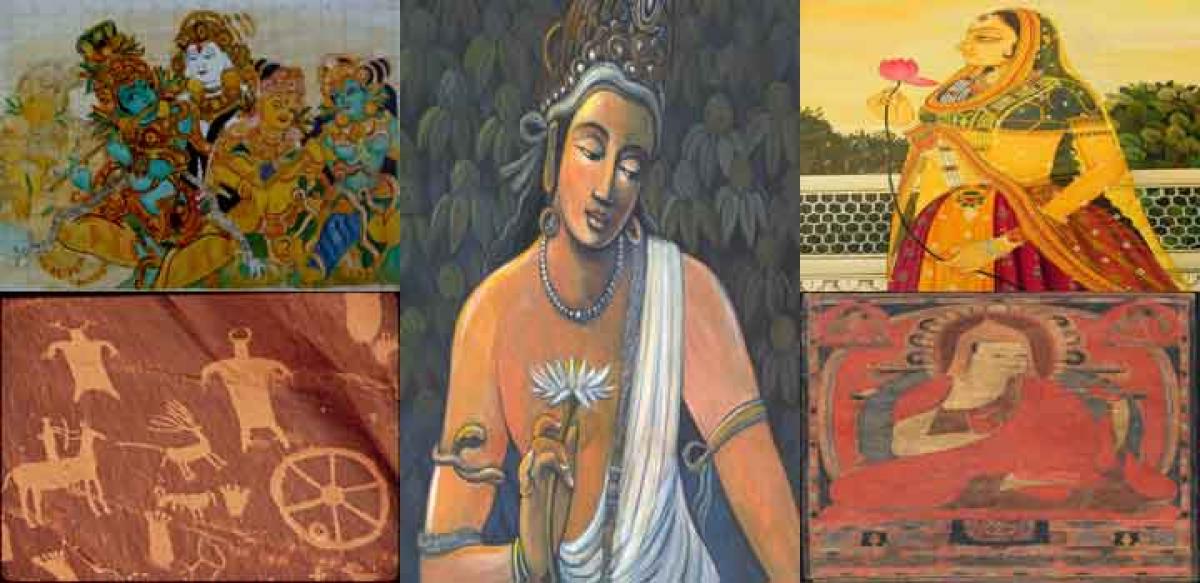
Indian painting has a very long tradition and history in Indian art. The earliest Indian paintings were the rock paintings of pre-historic times, the petroglyphs as found in places like Bhimbetka rock shelters, some of the Stone Age rock paintings found among the Bhimbetka rock shelters are approximately 30,000 years old.
Indian painting has a very long tradition and history in Indian art. The earliest Indian paintings were the rock paintings of pre-historic times, the petroglyphs as found in places like Bhimbetka rock shelters, some of the Stone Age rock paintings found among the Bhimbetka rock shelters are approximately 30,000 years old.
India's Buddhist literature is replete with examples of texts which describe palaces of the army and the aristocratic class embellished with paintings, but the paintings of the Ajanta Caves are the most significant of the few survivals. Smaller scale painting in manuscripts was probably also practised in this period, though the earliest survivals are from the medieval period.
Mughal paintingrepresented a fusion of the Persian miniature with older Indian traditions, and from the 17th century its style was diffused across Indian princely courts of all religions, each developing a local style.
Company paintings were made for British clients under the British raj, which from the 19th century also introduced art schools along Western lines, leading to modern Indian painting, which is increasingly returning to its Indian roots.
Famous Indian painting styles
- Rajasthani Painting
- Mysore painting
- Tanjore painting
- Madhubani painting
- Pattachitra painting
- Kalamkari painting
- Mughal painting
Sadangas
Sadanga or Six Limbs of Indian Painting – Evolved 1 BCE, they are series of Principles or Limbs of Indian Painting. Vatsyayana, who lived during the third century A.D., enumerates these in his work Kamasutra having extracted them from still more ancient works.
1.Rupabheda -The knowledge of appearances.
2.Pramanam - Correct perception, measure and structure.
3.Bhava - Action of feelings on forms.
4.Lavanya Yojanam - Infusion of grace, artistic representation.
5.Sadrisyam - Resemblance or Similitude.
6.Varnikabhanga - Artistic manner of using the brush and colours. (Tagore.)
Fresco paintings
- Frescoes are paintings which are done on wet plaster in which colours become fixed as the plaster dries.
- First, the rough stone surfaces were primed with a thick coating of paste made from clay, cow-dung, animal hair and vegetable fibre. Next, a finer layer of smooth white lime was applied. Before this was dry, the artists quickly sketched the outlines of their pictures using red cinnabar, which they then filled in with an undercoat of terre-verte.
- They are found on the walls and ceilings at Ajanta. The paintings reflect different phases of Indian Culture from jain tirthankar mahaveer's birth to his nirvana in the 8th Century AD.
- The artists used shading to give a three-dimensional effect. They depict themes of court life, feasting, processions, men and women at work, festivals, various natural scenes including animals, birds and flowers
Sittanavasal Paintings
- Mural Paintings, Sittanavasal Cave Temple
- Tanjore, TN
- Sanctum and ardha-mandapam of Aravirkovil have Fresco Paintings
- Initiative by Mahendra Verma and Narsimha Verma
- The ceilings have depiction of a lotus tank with natural looking images of men, animals, flowers, birds and fishes representing the Samavasarana faith of Jainism.
Ellora cave paintings
- Aurangabad, Rashtrakuta Empire
- 3 Religions influence
- Hinduism – Epics and Mythological
- Depiction of Flowers, Animals, Battle Scene, elephant in Lotus Pond, Shiva, Nature Etc
- Found in 5 caves but currently preserved only in the Kailasa Temple
- The paintings were done in two series - the first, at the time of carving the caves & the subsequent series was done several centuries later. The earlier paintings show Vishnu & Lakshmi borne through the clouds by Garuda, with clouds in the background.
- The sinewy figures have sharp features & pointed noses. The protruding eye typical of the later Gujarathi style appears for the first time in Ellora. In the subsequent series, the main composition is that of a procession of Saiva holy men. The flying Apsaras are graceful . Very few murals in the Jain temples are well preserved.
Lepakshi paintings
- Lepakshi Vijayanagara
- Murals on Temple Walls
- Non Religious Theme
- Complete absence of Primary Colours
- Decline in the quality of Paintings
- This large painting of Veerabhadra measures about 23 feet by 13 feet.
- Paintings depict the incarnations of Vishnu
Apabrahmsa Miniature
- Origins in Mewad and Gujarat Region
- The Themes are often Jainism and Vaishnavism
- Features
- Miniature Paintings
- Pointed Nose
- Bulging Eyes
- Double Chin
- Bright and Gold Colours
- Stiff Figure
- Animals and Birds are represented as Toys
Ajanta Paintings
- They are Mural and Fresco paintings on the walls of the caves
- 29 caves altogether
- Features
- Expressions through hand Postures
- Hairstyles differ for females
- Emotions – Even for Birds and Animals
- USE OF TEMPERA STYLES – Using Pigments
- These are Fresco Paintings – Wet Plaster
- JATAKA THEME
Minature Paintings
- Human Characters are on Side Profile
- Bulging Eyes, Pointed nose and Slim Waist
- Skin colour painted in Brown
- Women have long hair
- Colour of hair and Eyes is in Black
- Indian Traditional Dress is always painted
- Men have Turban on their Head
Bagh Paintings
- North of Ajanta
- Themes are both Secular and Religious
- Buddhism and Hinduism theme often seen
- Highly Influenced by the Ajanta Paintings
- Uses the Fresco method and Tempera methods of Ajanta
- Striking resemblance to the Srigiriya Fresco paintings
Petro glyphs:
Petroglyphs (also called rock engravings) are pictogram and logogram images created by removing part of a rock surface by incising, picking, carving, and abrading.
- Historic
- Carvings, Engravings on Caves etc
- Features
- Bold Lines and Use of Colours Like Ochre Red, Yellow Earth and Black Sooth
- Figures of Animals, horses hunting scenes, riding scenes etc
- Eg – Bhimbhetka Caves ( 30 000 Years Old ) – Found by V S wakankar – 1957-58
- Three Periods
- Upper Paleolithic – White, Dark Red and Green Lines - Bison; Elephant, Rhino, Tiger.
- Mesolithic - Mainly Red Colours ( Group Hunting )
- Calcolithic – Green and Yellow Colours ( Battle Theme)
| Mural Paintings | Minature Paintings |
| Large Work – On walls generally | Detailed and small ( <25 Sq inch) |
| Theme on 3 Indian Religions | Paper, palm leaf, cloth, Glass |
| Eg: | Level of Detail is Intriguing |
| Ajanta Cave | Composition, perspective and Colour are important |
| Ellora Cave | Derived from word ‘Minium’ – Red Lead |
| Bagh Cave | 1/6th of actual Size |
| Lepakshi | Adult head 9” – 1.5” |
| Sitannavasal | Eg – Pala School, Ragmala, Mughal, Kishangadh and Apabrahmsa |
By:Balalatha Mallavarapu








